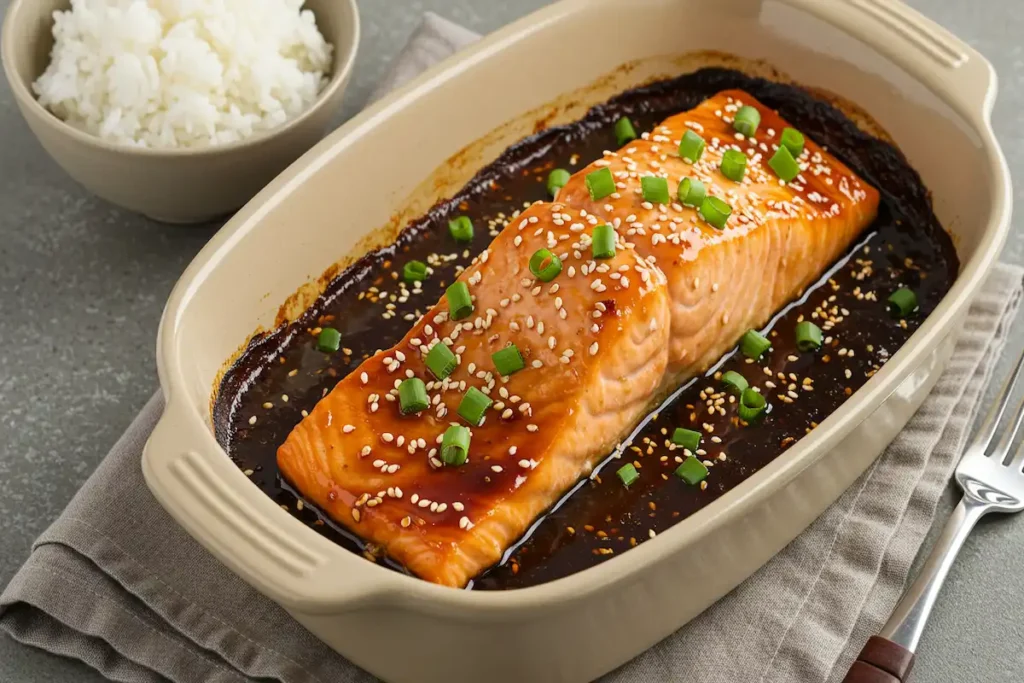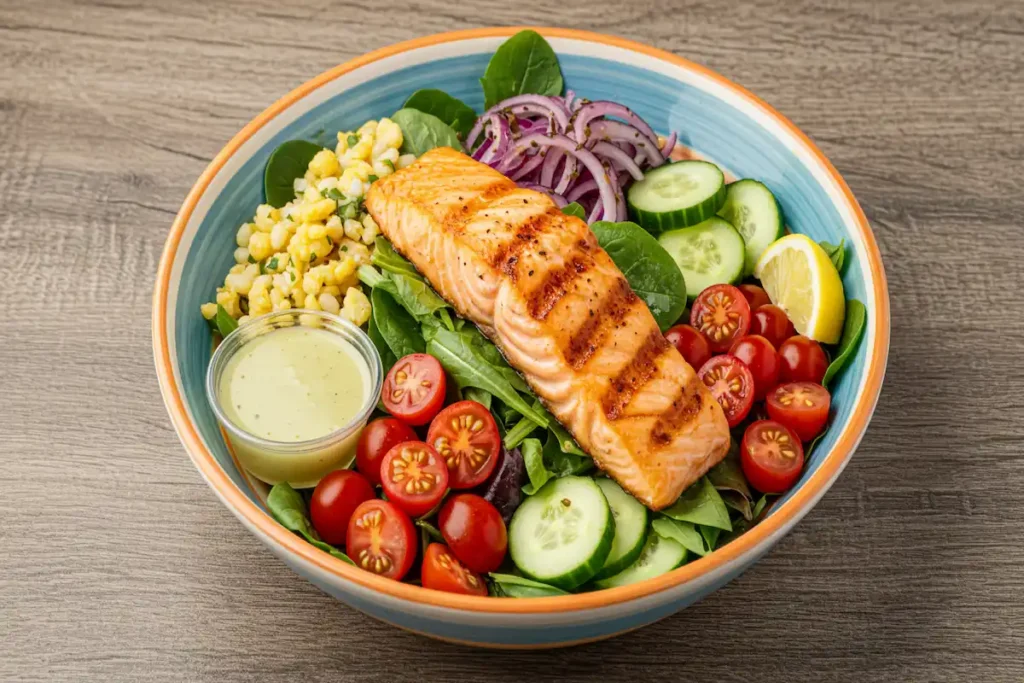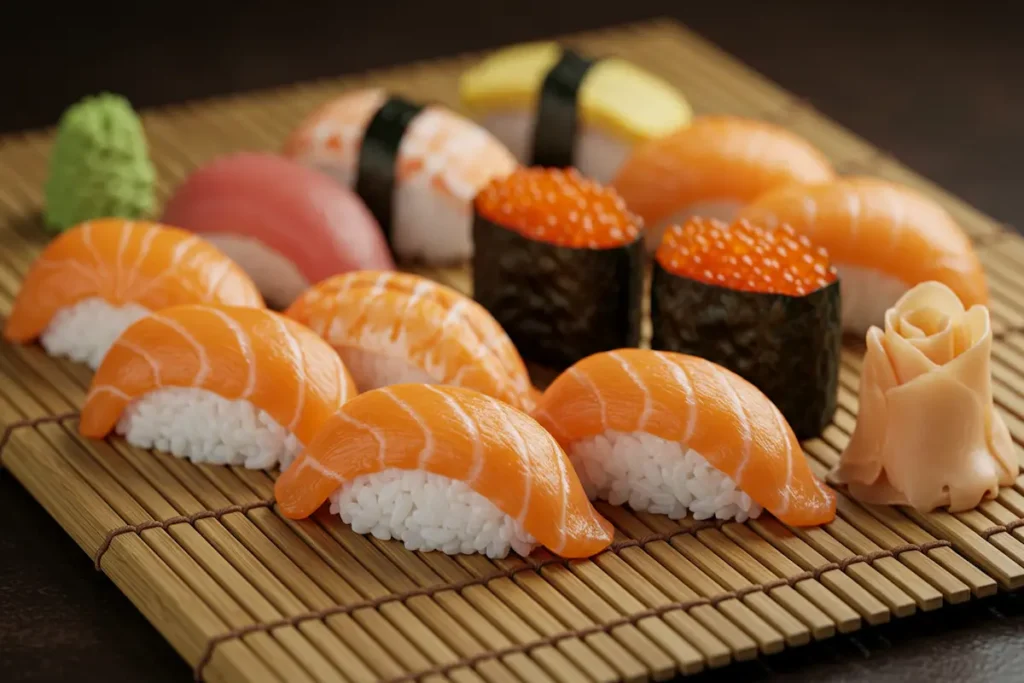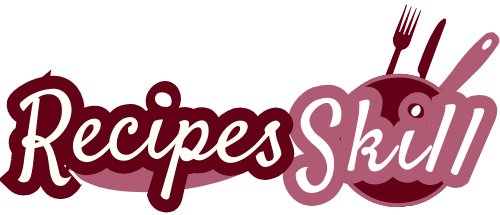Salmon is a beloved fish, known for its rich flavor and numerous health benefits. Whether you’re a seasoned chef or a home cook, finding the tastiest way to cook salmon can elevate your meals to a whole new level. In this article, we’ll explore various cooking methods, flavoring techniques, and creative recipes that will make your salmon dishes shine. So, let’s dive into the world of salmon cooking and discover how to make this delicious fish even more delightful!
Introduction to Cooking Salmon
What Makes Salmon a Popular Choice?
Salmon is not just any fish; it’s a superstar in the culinary world! Its distinctive flavor and versatile nature make it a favorite among many. You can grill it, bake it, or even pan-sear it, and it still tastes fantastic. Plus, salmon is packed with nutrients, including omega-3 fatty acids, which are great for heart health. This fish is not only delicious but also a smart choice for those looking to eat healthier.
Nutritional Benefits of Salmon
When it comes to nutrition, salmon is hard to beat. It’s loaded with high-quality protein, essential vitamins, and minerals. For instance, a serving of salmon provides a significant amount of vitamin B12, which is crucial for energy production and brain health. Additionally, the omega-3 fatty acids found in salmon can help reduce inflammation and lower the risk of chronic diseases. So, not only is salmon tasty, but it’s also a powerhouse of nutrition!
Incorporating salmon into your diet can be a delicious way to boost your health. Whether you’re looking to impress guests at a dinner party or simply want to enjoy a nutritious meal at home, knowing how to cook salmon in the tastiest way possible is key. Now that we’ve set the stage, let’s explore the different cooking methods that can bring out the best in this fantastic fish!
Different Cooking Methods for Salmon
When it comes to cooking salmon, there are several methods that can enhance its flavor and texture. Each technique brings out unique qualities in the fish, making it essential to choose the right one for your dish. Let’s explore some of the most popular cooking methods for salmon, including grilling, baking, and pan-searing.
1. Grilling Salmon
Grilling is a fantastic way to cook salmon, as it imparts a smoky flavor that complements the fish beautifully. The high heat of the grill creates a delicious crust while keeping the inside tender and flaky.
Benefits of Grilling
One of the main benefits of grilling salmon is the charred flavor it develops. This method also allows excess fat to drip away, making it a healthier option. Plus, grilling is quick and easy, perfect for those busy weeknights or summer barbecues.
Step-by-Step Grilling Instructions
- Preheat the Grill: Start by preheating your grill to medium-high heat.
- Prepare the Salmon: Pat the salmon fillets dry with a paper towel. Brush them lightly with olive oil and season with salt, pepper, and any other desired spices.
- Grill the Salmon: Place the salmon skin-side down on the grill. Cook for about 6-8 minutes, depending on the thickness of the fillet. Flip carefully and grill for an additional 4-6 minutes until the fish flakes easily with a fork.
- Serve: Remove from the grill and let it rest for a few minutes before serving. Pair it with a fresh salad or grilled vegetables for a complete meal.
2. Baking Salmon
Baking is another excellent method for cooking salmon, especially if you want a hands-off approach. This technique allows the fish to cook evenly while retaining its moisture.
Benefits of Baking
Baking salmon is not only simple but also versatile. You can easily add various seasonings, marinades, or toppings before placing it in the oven. This method is perfect for busy cooks who want to prepare a delicious meal without much fuss.
Step-by-Step Baking Instructions
- Preheat the Oven: Preheat your oven to 375°F (190°C).
- Prepare the Salmon: Line a baking dish with parchment paper or lightly grease it. Place the salmon fillets in the dish, skin-side down. Drizzle with olive oil and season with salt, pepper, and your favorite herbs.
- Bake the Salmon: Bake in the preheated oven for about 15-20 minutes, depending on the thickness of the fillets. The salmon should be opaque and flake easily with a fork.
- Serve: Let it rest for a few minutes before serving. A squeeze of lemon juice on top can enhance the flavor even more!
3. Pan-Seared Salmon
Pan-searing is a fantastic way to achieve a crispy exterior while keeping the inside moist and tender. This method is perfect for those who love a bit of texture in their dishes.
Benefits of Pan-Searing
Pan-searing salmon allows for a quick cooking time and a delightful crust. It’s an excellent option for weeknight dinners when you want something delicious without spending hours in the kitchen.
Step-by-Step Pan-Searing Instructions
- Heat the Pan: Heat a non-stick skillet over medium-high heat and add a tablespoon of olive oil.
- Prepare the Salmon: Pat the salmon fillets dry and season with salt and pepper. You can also add herbs or spices for extra flavor.
- Sear the Salmon: Place the salmon fillets skin-side down in the hot skillet. Cook for about 4-5 minutes until the skin is crispy. Flip the fillets and cook for an additional 3-4 minutes until cooked through.
- Serve: Remove from the skillet and let it rest for a minute. Serve with a side of sautéed vegetables or a fresh salad.
Flavoring Techniques for Salmon

Once you’ve mastered the cooking methods for salmon, it’s time to explore how to enhance its flavor. Salmon is incredibly versatile, and the right marinades, sauces, and seasonings can elevate your dish from good to absolutely mouthwatering. Let’s dive into some effective flavoring techniques that will make your salmon shine!
1. Marinades and Rubs
Marinades and rubs are fantastic ways to infuse flavor into salmon before cooking. They can add depth and complexity, making each bite a delightful experience.
Popular Marinade Recipes
Here are a few popular marinades that work wonders with salmon:
- Lemon-Dill Marinade: Combine fresh lemon juice, olive oil, chopped dill, garlic, salt, and pepper. This bright and zesty marinade complements the natural flavors of the fish beautifully.
- Teriyaki Marinade: Mix soy sauce, honey, ginger, and garlic for a sweet and savory marinade. This is perfect for those who enjoy a touch of Asian-inspired flavor.
- Spicy Maple Marinade: Blend maple syrup, sriracha, soy sauce, and lime juice for a sweet and spicy kick. This marinade adds a unique twist to your salmon.
How to Apply Marinades
To get the most out of your marinades, follow these simple steps:
- Marinate the Salmon: Place the salmon fillets in a resealable plastic bag or a shallow dish. Pour the marinade over the fish, ensuring it’s well-coated.
- Refrigerate: Let the salmon marinate in the refrigerator for at least 30 minutes, or up to 2 hours for more intense flavor.
- Cook as Desired: Remove the salmon from the marinade and cook using your preferred method. Discard any leftover marinade to avoid contamination.
2. Sauces and Toppings
In addition to marinades, sauces and toppings can add a burst of flavor to your salmon dishes. They can be drizzled on top or served on the side for dipping.
Best Sauces for Salmon
Here are some delicious sauces that pair perfectly with salmon:
- Garlic Butter Sauce: Melt butter and sauté minced garlic until fragrant. Drizzle this over cooked salmon for a rich and savory flavor.
- Creamy Dill Sauce: Combine Greek yogurt, fresh dill, lemon juice, and a pinch of salt for a refreshing sauce that complements the fish beautifully.
- Mango Salsa: Dice fresh mango, red onion, cilantro, and jalapeño for a fruity and spicy topping. This adds a vibrant touch to your salmon dish.
Creative Topping Ideas
Don’t be afraid to get creative with toppings! Here are a few ideas to inspire you:
- Avocado and Tomato Salad: Top your salmon with a fresh salad of diced avocado, cherry tomatoes, and a squeeze of lime for a refreshing contrast.
- Pineapple Salsa: Combine diced pineapple, red onion, cilantro, and lime juice for a tropical twist that pairs wonderfully with grilled salmon.
- Herb Crust: Mix breadcrumbs with fresh herbs, garlic, and olive oil. Press this mixture onto the salmon before baking for a crunchy topping.
3. Seasoning Tips
Proper seasoning is crucial for bringing out the best in your salmon. A few simple spices can make a world of difference.
Essential Spices for Salmon
Here are some essential spices that work well with salmon:
- Salt and Pepper: The basics! Always season your salmon with salt and pepper to enhance its natural flavor.
- Paprika: Adds a mild smokiness and beautiful color to your dish.
- Cumin: A pinch of cumin can add warmth and depth to your salmon, especially in spicy dishes.
How to Season Salmon Properly
To season your salmon effectively, follow these tips:
- Pat Dry: Always pat your salmon dry with a paper towel before seasoning. This helps the spices adhere better.
- Even Coating: Sprinkle salt, pepper, and any other spices evenly over the surface of the fish. Don’t forget to season the skin side if you’re cooking it skin-on.
- Let it Rest: Allow the seasoned salmon to sit for about 10-15 minutes before cooking. This helps the flavors penetrate the fish.
With these flavoring techniques, you can transform your salmon dishes into culinary masterpieces. Whether you choose to marinate, sauce, or season, the right flavors will make your salmon truly unforgettable.
Cooking Salmon to Perfection

Cooking salmon to perfection is an art that requires attention to detail. Understanding doneness, avoiding common mistakes, and knowing how to keep your salmon flaky and moist are essential for achieving the best results. Let’s explore these crucial aspects to ensure your salmon dishes are always a hit!
1. Understanding Salmon Doneness
Knowing when your salmon is perfectly cooked is key to enjoying its rich flavor and tender texture. Overcooked salmon can become dry and unappetizing, while undercooked salmon may not be safe to eat.
How to Check for Doneness
There are a few methods to check if your salmon is done:
- Fork Test: Gently press a fork into the thickest part of the salmon. If it flakes easily, it’s done. If it resists, it needs more time.
- Thermometer: The most accurate way is to use a meat thermometer. Insert it into the thickest part of the fillet; the internal temperature should reach 145°F (63°C) for safe consumption.
- Color Check: Cooked salmon should be opaque and have a light pink color. If it’s still translucent, it needs more cooking time.
Ideal Internal Temperatures
For perfectly cooked salmon, aim for the following internal temperatures:
- Medium-Rare: 125°F (52°C) – Still slightly pink in the center, very tender.
- Medium: 135°F (57°C) – Flaky and moist, with a light pink center.
- Well-Done: 145°F (63°C) – Fully cooked, opaque, and firm.
2. Common Mistakes to Avoid
Even experienced cooks can make mistakes when preparing salmon. Here are some common pitfalls to watch out for:
1. Overcooking Salmon
One of the biggest mistakes is overcooking salmon. It can quickly go from perfectly flaky to dry and tough. To avoid this, keep a close eye on the cooking time and use a thermometer for accuracy. Remember, salmon continues to cook slightly after being removed from the heat, so it’s okay to take it off just before it reaches the desired temperature.
2. Underseasoning Salmon
Another common mistake is underseasoning. Salmon has a rich flavor, but it still needs a good amount of seasoning to shine. Don’t be shy with salt, pepper, and your favorite herbs or spices. A well-seasoned piece of salmon can make all the difference in taste.
3. Tips for Flaky and Moist Salmon
To ensure your salmon remains flaky and moist, consider these helpful tips:
1. Importance of Resting Time
After cooking, let your salmon rest for a few minutes before serving. This allows the juices to redistribute throughout the fish, resulting in a more tender and flavorful bite. Resting also helps prevent the salmon from drying out.
2. Using the Right Cooking Fat
The type of fat you use can impact the flavor and moisture of your salmon. Olive oil is a popular choice, but you can also use butter for a richer taste. If you’re grilling, consider using a non-stick spray or oiling the grill grates to prevent sticking.
With these tips in mind, you’ll be well on your way to cooking salmon to perfection every time. Understanding doneness, avoiding common mistakes, and ensuring moisture will help you create delicious salmon dishes that impress your family and friends.
Creative Salmon Recipes

Now that you’ve learned about the various cooking methods and flavoring techniques for salmon, it’s time to put that knowledge into action! Here are three creative salmon recipes that highlight the deliciousness of this fish while incorporating different cooking styles and flavor profiles. Get ready to impress your taste buds!
1. Grilled Salmon with Lemon-Dill Sauce
This grilled salmon recipe is a classic that never goes out of style. The zesty lemon-dill sauce adds a refreshing touch that perfectly complements the smoky flavor of the grilled fish.
Ingredients:
- 4 salmon fillets
- 2 tablespoons olive oil
- Salt and pepper to taste
- 1 lemon (juiced and zested)
- 1/4 cup fresh dill, chopped
- 2 cloves garlic, minced
- 1/2 cup Greek yogurt
Instructions:
- Prepare the Marinade: In a bowl, mix olive oil, lemon juice, lemon zest, garlic, salt, and pepper. Marinate the salmon fillets in this mixture for at least 30 minutes.
- Preheat the Grill: Heat your grill to medium-high.
- Grill the Salmon: Place the marinated salmon on the grill, skin-side down. Grill for about 6-8 minutes, then flip and grill for another 4-6 minutes until cooked through.
- Make the Sauce: While the salmon is grilling, combine Greek yogurt, chopped dill, and a pinch of salt in a small bowl.
- Serve: Plate the grilled salmon and drizzle with the lemon-dill sauce. Enjoy with a side of grilled vegetables or a fresh salad!
2. Baked Teriyaki Salmon
This baked teriyaki salmon is a sweet and savory delight that’s incredibly easy to prepare. The teriyaki glaze caramelizes beautifully in the oven, creating a mouthwatering dish.
Ingredients:
- 4 salmon fillets
- 1/2 cup teriyaki sauce
- 2 tablespoons honey
- 1 tablespoon sesame oil
- 1 tablespoon rice vinegar
- Sesame seeds and green onions for garnish
Instructions:
- Preheat the Oven: Preheat your oven to 375°F (190°C).
- Prepare the Marinade: In a bowl, mix teriyaki sauce, honey, sesame oil, and rice vinegar. Reserve a small amount for drizzling later.
- Marinate the Salmon: Place the salmon fillets in a baking dish and pour the marinade over them. Let them marinate for about 15-20 minutes.
- Bake the Salmon: Bake in the preheated oven for 15-20 minutes, or until the salmon flakes easily with a fork.
- Garnish and Serve: Drizzle the reserved marinade over the salmon and sprinkle with sesame seeds and chopped green onions. Serve with steamed rice and vegetables for a complete meal!
3. Pan-Seared Salmon with Garlic Butter
This pan-seared salmon recipe is a quick and delicious option for busy weeknights. The garlic butter sauce adds richness and flavor that will have everyone coming back for seconds.
Ingredients:
- 4 salmon fillets
- Salt and pepper to taste
- 2 tablespoons olive oil
- 4 tablespoons unsalted butter
- 4 cloves garlic, minced
- Fresh parsley, chopped (for garnish)
Instructions:
- Season the Salmon: Pat the salmon fillets dry and season with salt and pepper on both sides.
- Heat the Pan: In a large skillet, heat olive oil over medium-high heat.
- Sear the Salmon: Place the salmon fillets skin-side down in the skillet. Cook for about 4-5 minutes until the skin is crispy. Flip the fillets and cook for another 3-4 minutes.
- Make the Garlic Butter: In the last minute of cooking, add the butter and minced garlic to the pan. Spoon the melted garlic butter over the salmon as it finishes cooking.
- Serve: Remove the salmon from the skillet and garnish with fresh parsley. Serve with your favorite sides, such as mashed potatoes or a green salad.
These creative salmon recipes showcase the versatility of this delicious fish while incorporating various cooking methods and flavoring techniques. Whether you’re grilling, baking, or pan-searing, you can create mouthwatering dishes that will impress your family and friends.
FAQs about Cooking Salmon
As you embark on your journey to master the art of cooking salmon, you may have some questions. Here, we’ll address some frequently asked questions that can help clarify common concerns and enhance your cooking experience. Let’s dive into these queries to ensure you have all the information you need!
1. What is the best way to cook salmon?
The best way to cook salmon really depends on your personal preference and the flavor profile you’re aiming for. Grilling is fantastic for a smoky flavor, while baking is perfect for a hands-off approach that retains moisture. Pan-searing offers a crispy exterior and is quick to prepare. Ultimately, the tastiest way to cook salmon is the method that suits your taste and occasion. Experimenting with different techniques will help you discover your favorite!
2. How long should I cook salmon?
Cooking time for salmon varies based on the method and thickness of the fillet. As a general rule, you can follow these guidelines:
- Grilling: About 6-8 minutes per side for fillets that are 1 inch thick.
- Baking: Approximately 15-20 minutes at 375°F (190°C) for standard fillets.
- Pan-Searing: Around 4-5 minutes on the skin side and 3-4 minutes on the flesh side.
Always check for doneness using a fork or a meat thermometer to ensure your salmon is cooked to perfection.
3. Can you eat salmon skin?
Yes, you can eat salmon skin! In fact, it’s packed with nutrients and can be quite delicious when cooked properly. The skin becomes crispy when grilled or pan-seared, adding a delightful texture to your dish. If you’re concerned about the taste or texture, you can always remove the skin before eating. However, many people enjoy the added flavor and crunch that salmon skin provides.
With these FAQs, you should feel more confident in your ability to cook salmon deliciously and safely. Understanding the best cooking methods, timing, and the benefits of salmon skin can enhance your culinary skills and make your salmon dishes even more enjoyable. In the final part of this article, we’ll wrap up our exploration of the tastiest ways to cook salmon!
Conclusion
In conclusion, discovering the tastiest way to cook salmon opens up a world of culinary possibilities. From grilling and baking to pan-searing, each method brings out unique flavors and textures that can elevate your meals. By incorporating various marinades, sauces, and seasonings, you can create a wide array of delicious dishes that cater to your taste preferences.
Remember to pay attention to doneness, avoid common cooking mistakes, and use the right techniques to keep your salmon flaky and moist. With the creative recipes provided, you now have the tools to impress your family and friends with your salmon cooking skills.
So, whether you’re preparing a casual weeknight dinner or hosting a special occasion, you can confidently choose the best method to cook salmon. Enjoy experimenting with flavors and techniques, and savor every delicious bite! Happy cooking!
